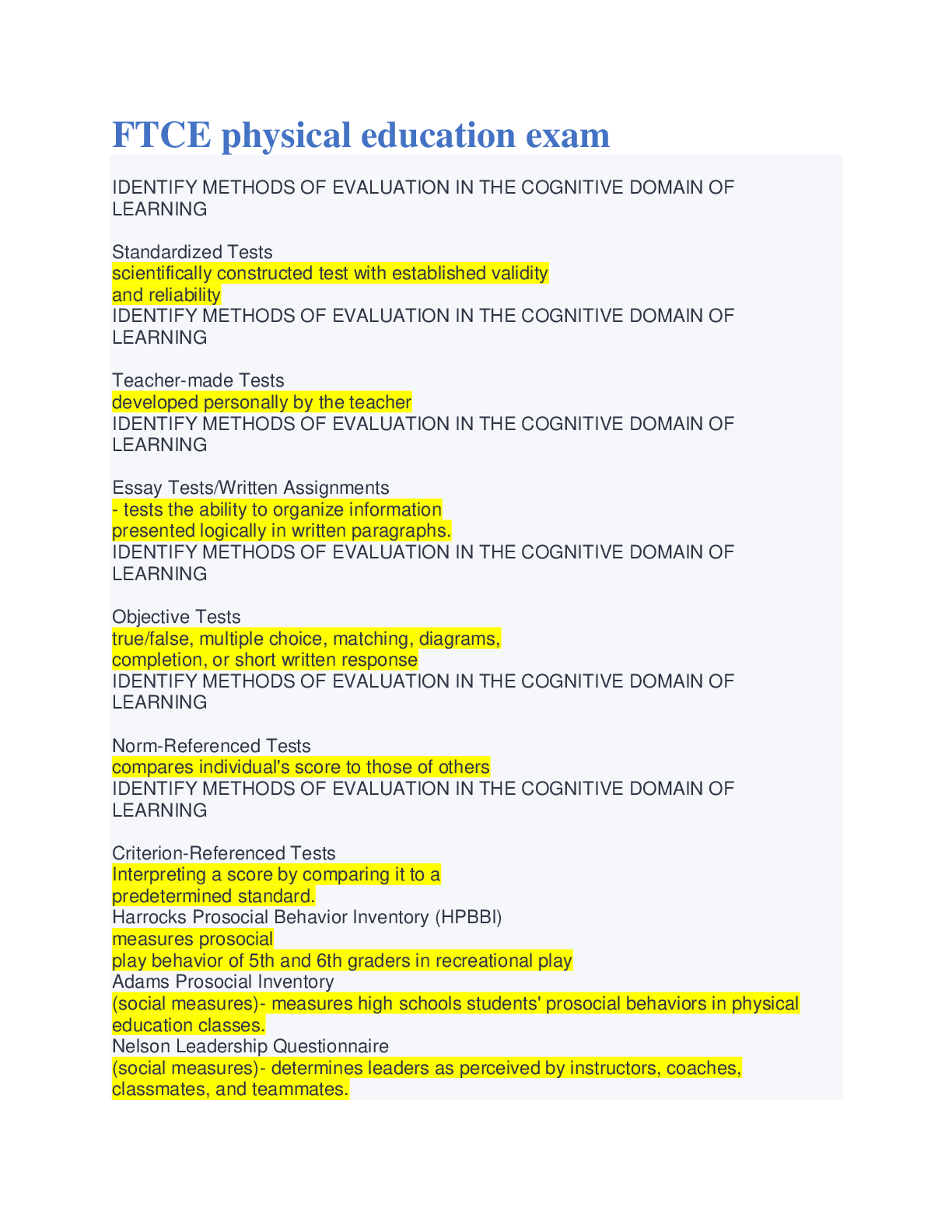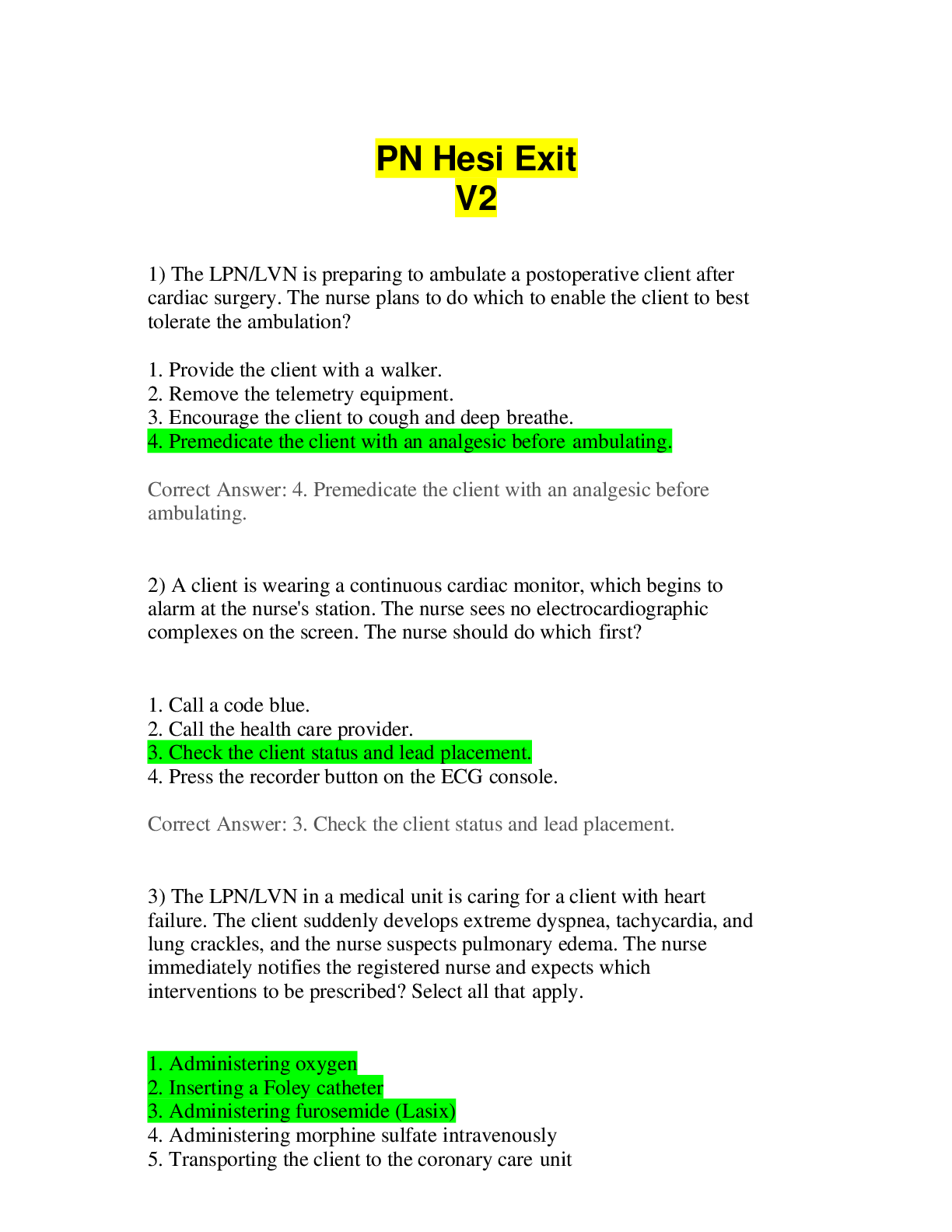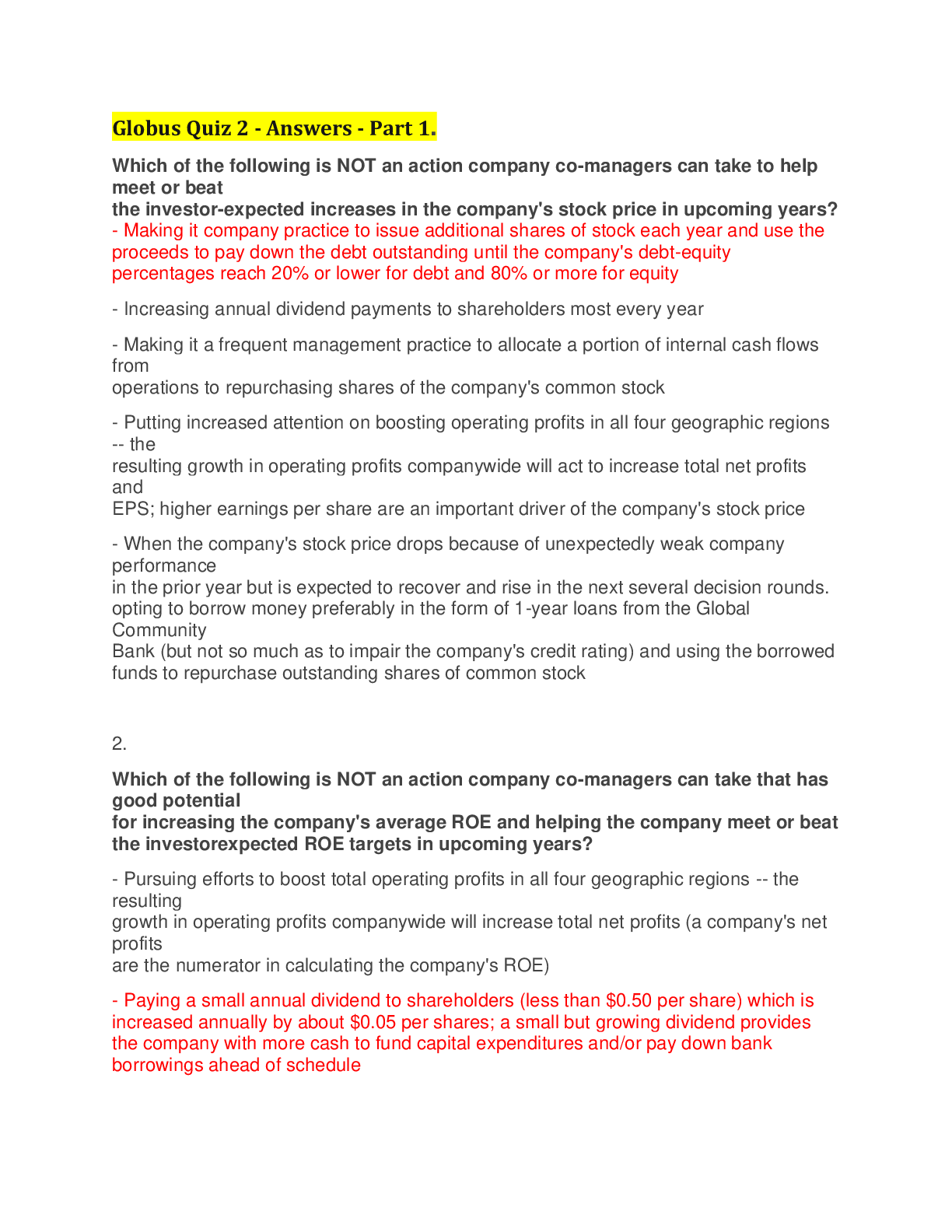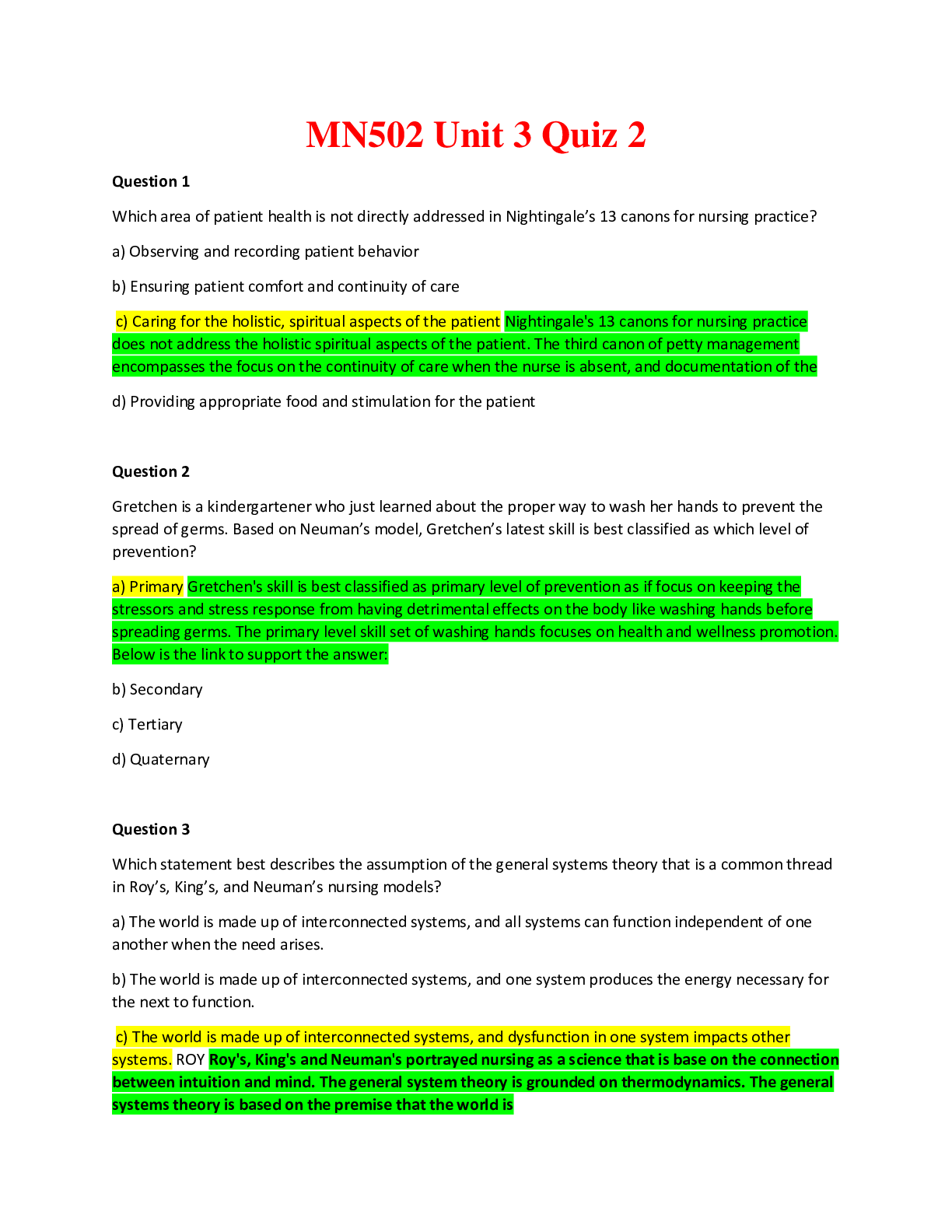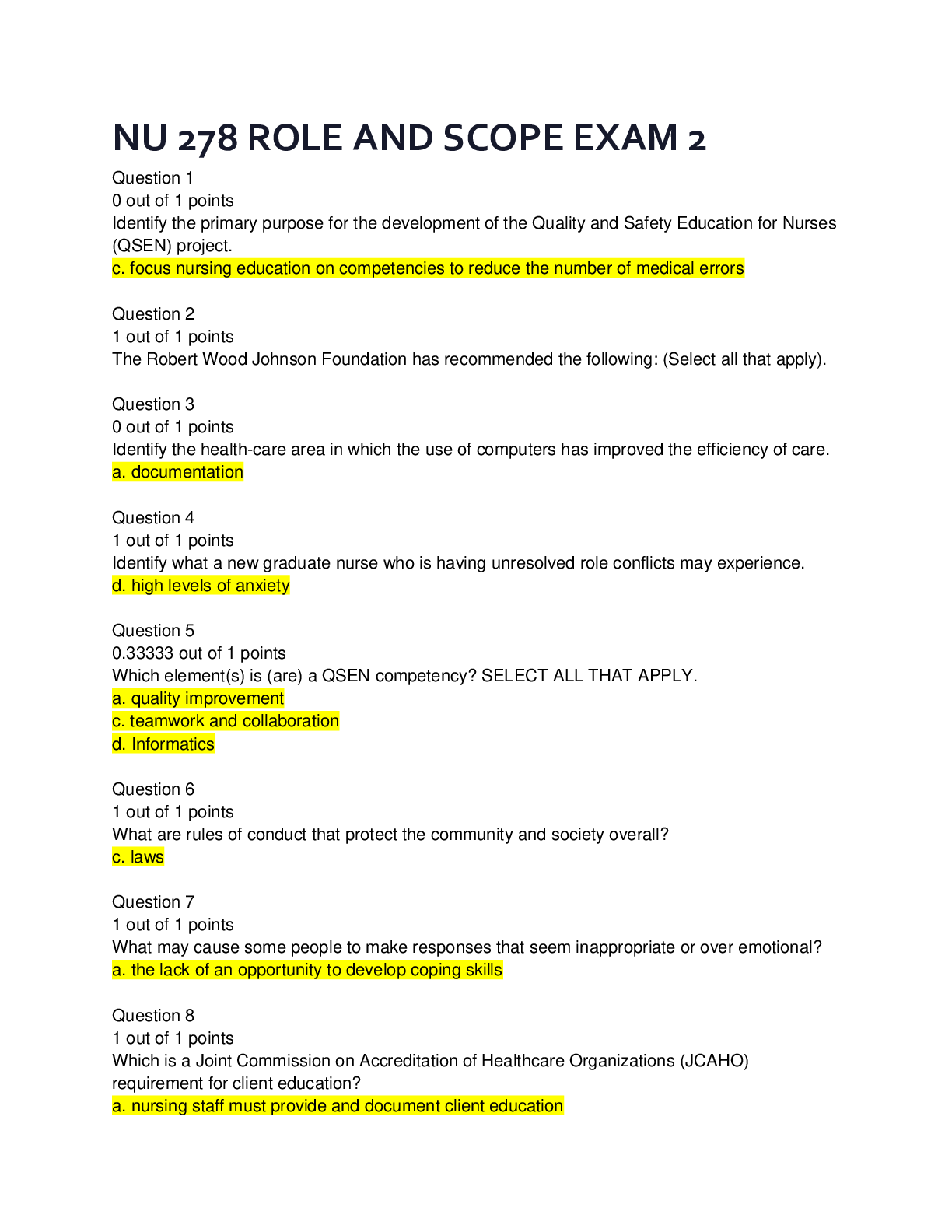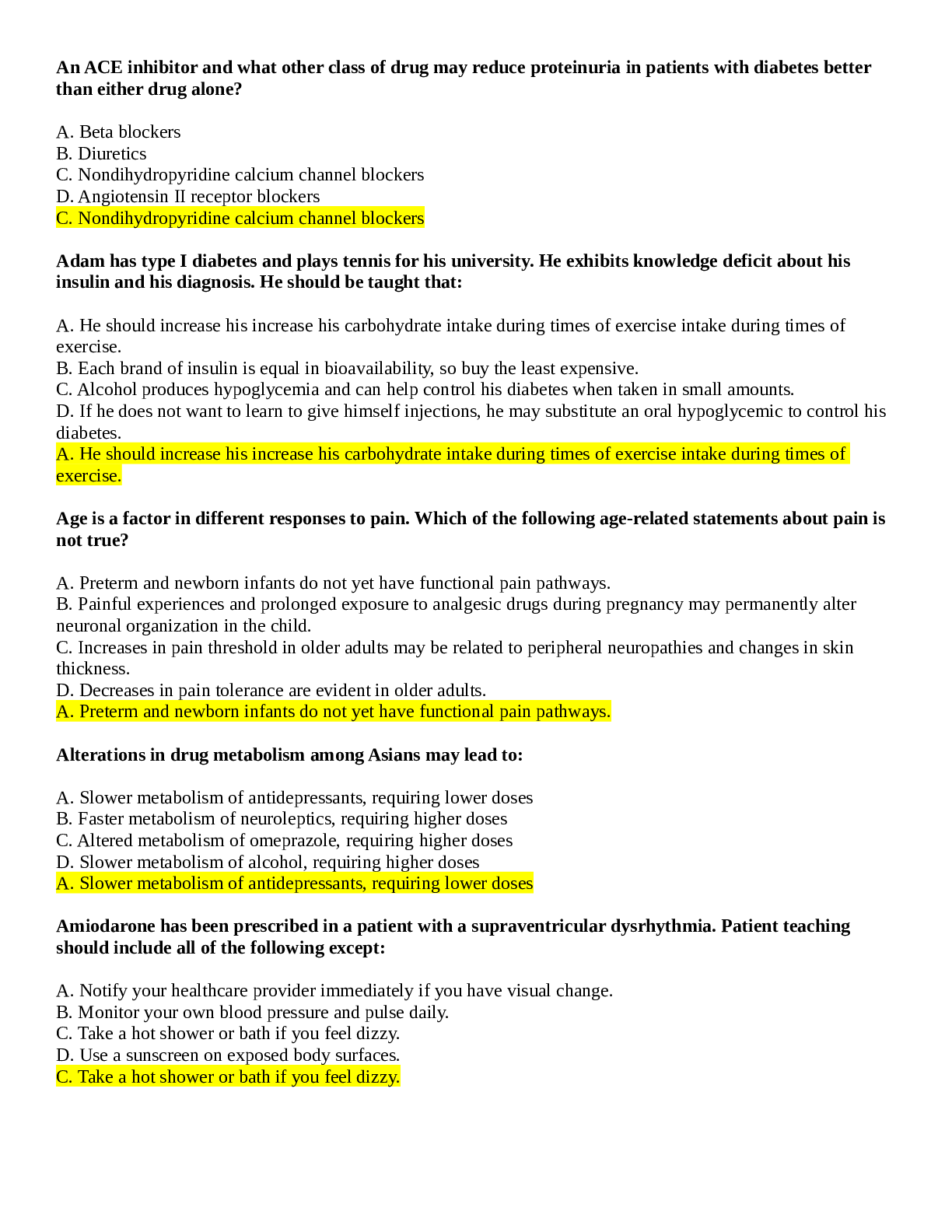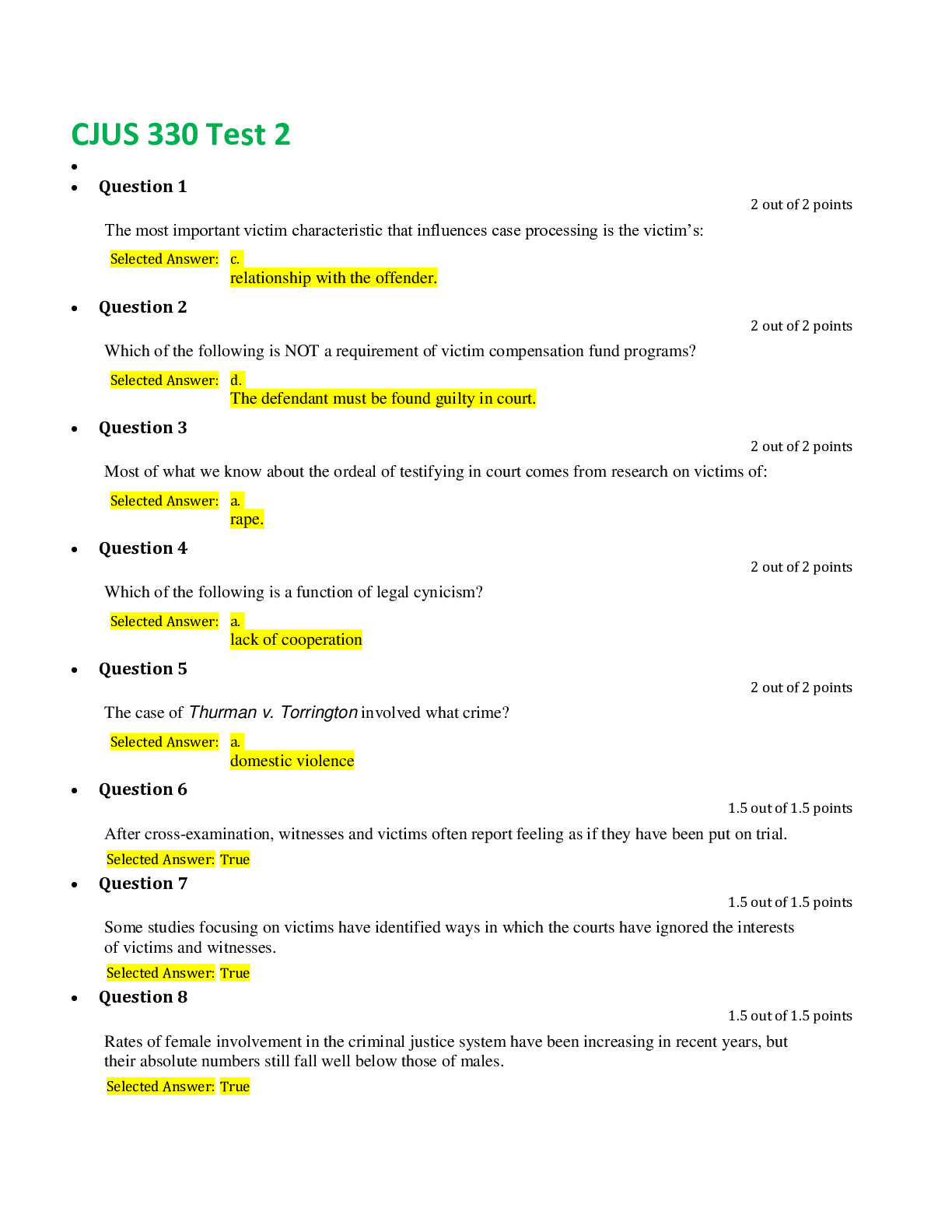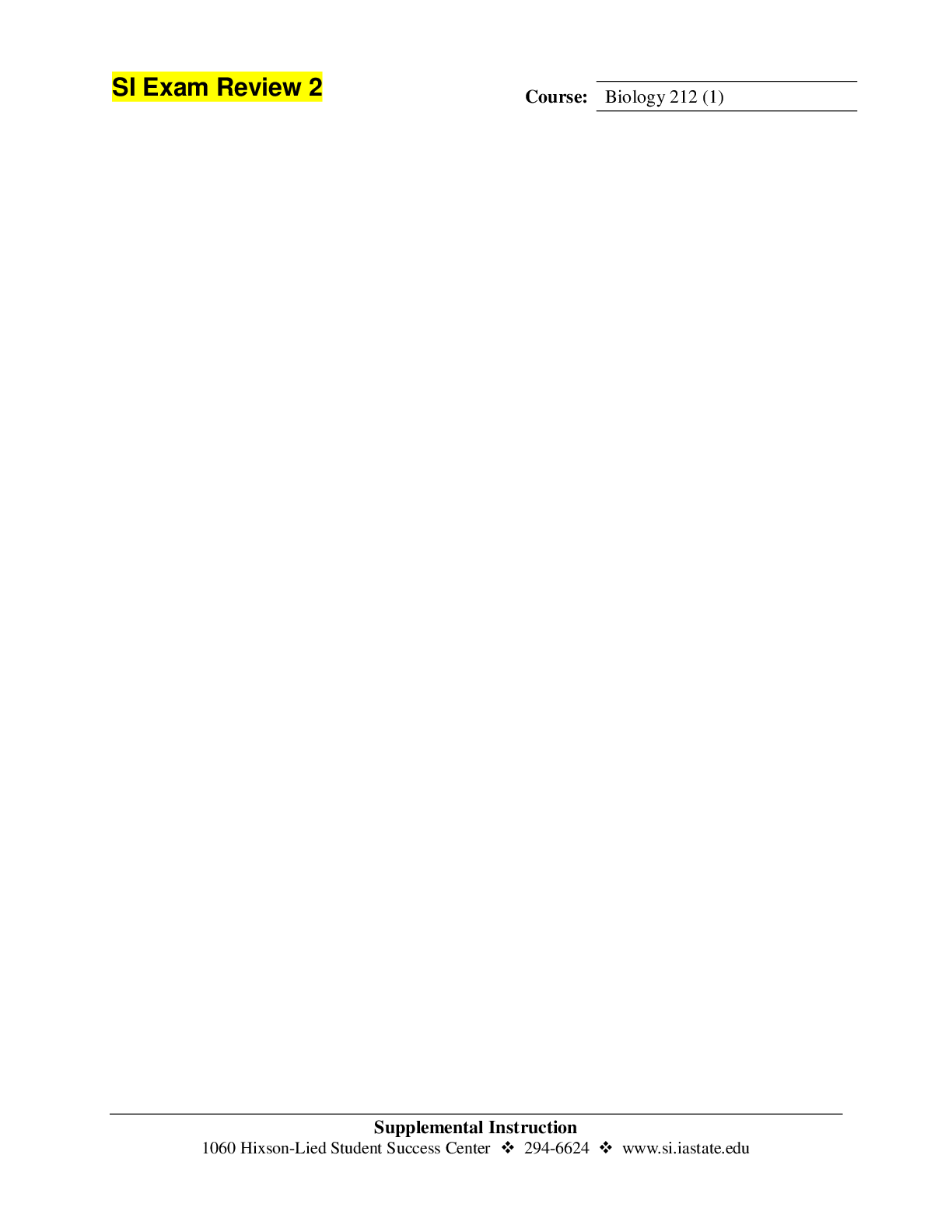Health Care > EXAM > AANP AGPCNP PRACTICE 2020 Test 2 questions and answers(scores 100%) (All)
AANP AGPCNP PRACTICE 2020 Test 2 questions and answers(scores 100%)
Document Content and Description Below
AANP AGPCNP PRACTICE 2020 Test 2 1. An older adult presents with severe abdominal pain. The husband reports that earlier in the afternoon, the patient's abdominal hernia had been firm and bulged ou... t 4 inches (10.2 cm). The patient had him press on the hernia and immediately felt burning pain throughout the abdomen. Which of the following is the nurse practitioners' NEXT action? 1. Abdominal CT scan 2. Complete blood count with differential 3. Abdominal ultrasound 4. Referral to the ED Correct Answer: 4. Referral to the ED 2. A young adult female who is 34 weeks pregnant presents with the complaint of urinary frequency every 1 to 2 hours. The patient has no fever and denies back pain. A urine dipstick test is positive for leukocyte esterase and nitrites. Microscopic analysis reveals 15-20 WBCs/hpf and a few bacteria. The BEST choice for treatment of this patient's urinary tract infection would be: 1. trimethoprim-sulfamethoxazole (Bactrim), 160 mg/800 mg twice daily for 3 days. 2. cephalexin (Keflex), 500 mg four times daily for 7 days. 3. ciprofloxacin (Cipro), 500 mg twice daily for 7 days. 4. erythromycin, 250 mg three times daily for 5 days. Correct Answer: 2. cephalexin (Keflex), 500 mg four times daily for 7 days. 3. An adult male presents with new-onset pain and tenderness in the low back and pain in the right great toe after a weekend of golf. He denies experiencing numbness and tingling. Which of the following would the nurse practitioner expect to find an investigation of this patient's low back pain? 1. Exacerbation of extremity symptoms with straight-leg raising 2. Loss of bowel and bladder function 3. Increased ankle jerk on evaluation of deep tendon reflexes 4. Increased lumbar lordosis Correct Answer: 1. Exacerbation of extremity symptoms with straight-leg raising 4. A true statement about essential tremors is that they: 1. often begin with "pill-rolling" of one hand and may affect the legs, feet, and toes. 2. are often barely visible, rapid tremors. 3. are a characteristic of Parkinson's disease. 4. are slow tremors that are absent or minimal at rest and usually involve the hands. Correct Answer: 4. are slow tremors that are absent or minimal at rest and usually involve the hands. 5. Which opioid medication is the MOST potent? 1. Codeine 2. Morphine 3. Oxycodone 4. Hydromorphone Correct Answer: 4. Hydromorphone 6. Which symptom documented in a menstrual diary is diagnostic of PMS? 1. Irritability 2. Decreased libido 3. Menstrual cramps 4. Dyspareunia Correct Answer: 1. Irritability 7. Which of the following is the medication of choice for monotherapy of an older adult with hypertension and no related comorbid conditions? 1.Alpha-blocker 2.Vasodilator 3.Thiazide diuretic 4.Beta-blocker Correct Answer: 3.Thiazide diuretic 8. An elderly, obese female presents for evaluation of a painful rash, first noticed 2 weeks ago, located under both breasts. The rash is visible as an area of confluent, beefy-red, excoriated lesions with smaller satellite lesions extending beyond the borders of the main lesions. The KOH prep reveals pseudohyphae. The nurse practitioner would recommend a/an: 1. course of oral steroids and air drying of skin after showers. 2. topical antifungal and order a fasting blood glucose. 3. oral antibiotic and order a hemoglobin A1c. 4. high-potency topical corticosteroid and use of dry dressings. Correct Answer: 2. topical antifungal and order a fasting blood glucose. 9. An older adult female complains of problems with urination. She reports that whenever she feels the need to urinate, she is unable to "make it to the bathroom in time," and wets herself. Which type of incontinence is MOST likely? 1. Urge 2. Overflow 3. Transient 4. Stress Correct Answer: 1. Urge 10. A young adult female presents with painful swelling of the right cheek anterior to the TMJ. The diagnosis is sialadenitis. In addition to antibiotics, treatment for this patient should include: 1. hot soaks and lemon drops. 2. alternating heat and cold. 3. cold compresses and massage. 4. hot soaks and mucolytics. Correct Answer: 1. hot soaks and lemon drops. 11. Initial therapy for older adult patients with arthritic joints is: 1. naproxen, 1000 mg twice daily. 2. ibuprofen, 600 mg four times daily. 3. glucosamine, 750 mg twice daily. 4. acetaminophen, 1000 mg four times daily. Correct Answer: 4. acetaminophen, 1000 mg four times daily. 12. Which of the following is an example of gross negligence? 1. Prescription of a drug that causes a fatal allergic reaction 2. Misdiagnosis of appendicitis, resulting in peritonitis and a prolonged hospital stay 3. Refusal to return the emergency phone call of a patient who has chest pain evolving into an MI 4. Failure to diagnose a problem at an unrelated routine visit Correct Answer: 3. Refusal to return the emergency phone call of a patient who has chest pain evolving into an MI 13. What is the correct order of pharmacokinetics of drugs in the body? 1. absorption, distribution, metabolism, excretion 2. distribution, absorption, metabolism, excretion 3. absorption, metabolism, distribution, excretion 4. metabolism, distribution, absorption, excretion Correct Answer: 1. absorption, distribution, metabolism, excretion 14. An older adult female is brought in by her daughter, who has been visiting her. The daughter reports that her mother seems confused and anxious, and is moving oddly as if she is stiff. The daughter has brought along the mother's medications. She is taking hydrochlorothiazide, levothyroxine (Synthroid), sertraline (Zoloft), baby aspirin, a multivitamin, and St. John's wort. Which condition would the nurse practitioner MOST urgently suspect? 1. Alzheimer's disease 2. Serotonin syndrome 3. Vascular dementia 4. Aspirin toxicity Correct Answer: 2. Serotonin syndrome 15. An adolescent male presents with marked itching in the inguinal region but not on the scrotum. Examination shows a peripherally-spreading, sharply-demarcated, centrally-clearing, erythematous lesion. The MOST likely diagnosis is: 1. poor hygiene. 2. tinea versicolor. 3. pediculosis pubis. 4. tinea cruris. Correct Answer: 4. tinea cruris. 16. A young adult presents with a 3-day history of a sore throat, fever [102°F (38.9°C)], and malaise. Physical examination reveals posterior cervical lymphadenopathy an [Show More]
Last updated: 2 years ago
Preview 1 out of 14 pages

Buy this document to get the full access instantly
Instant Download Access after purchase
Buy NowInstant download
We Accept:

Reviews( 0 )
$10.00
Can't find what you want? Try our AI powered Search
Document information
Connected school, study & course
About the document
Uploaded On
Jul 04, 2022
Number of pages
14
Written in
Additional information
This document has been written for:
Uploaded
Jul 04, 2022
Downloads
0
Views
101












